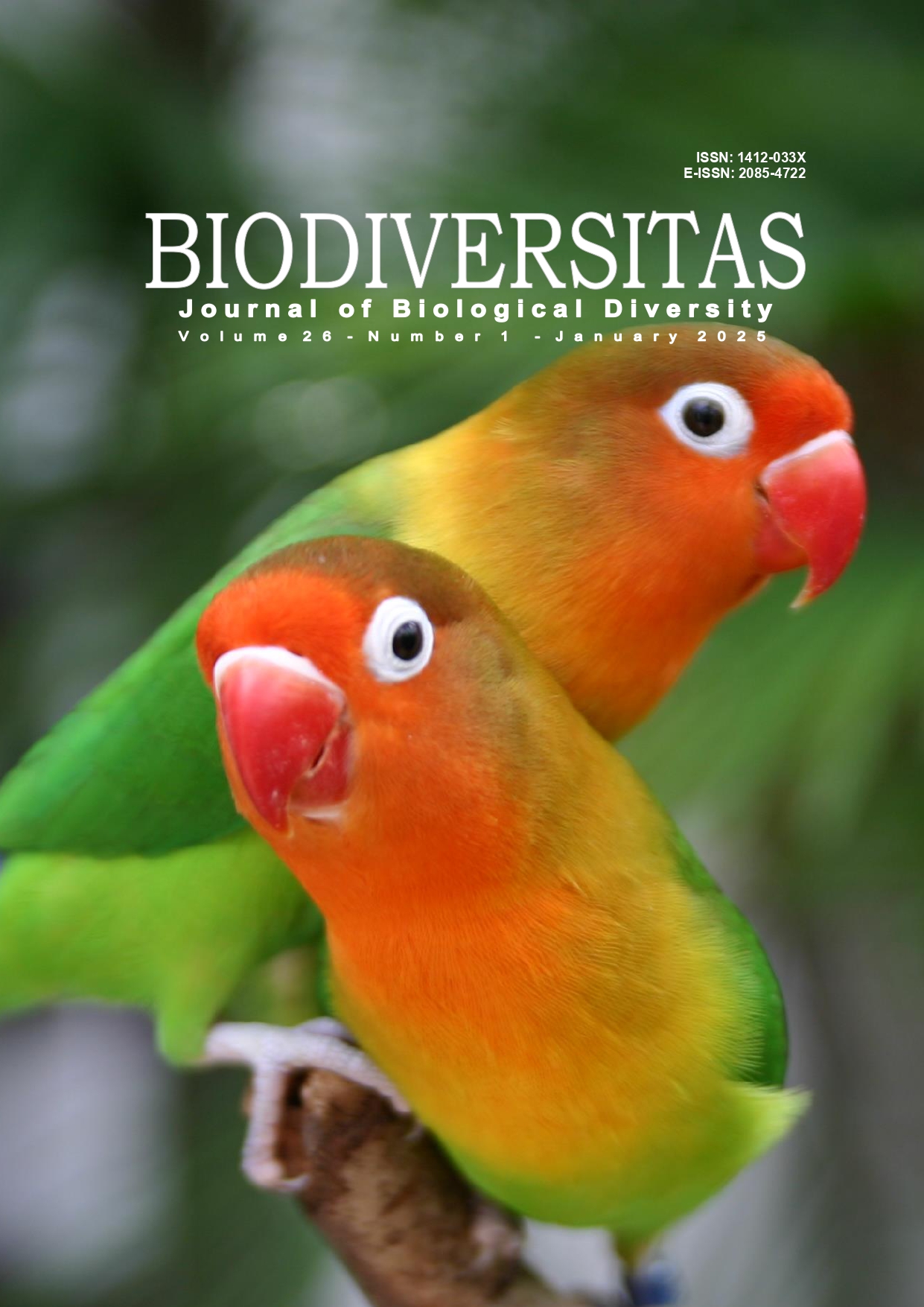Composition and role of ants (Formicidae) as indicators of habitat conditions in different stands in urban forest, Makassar, South Sulawesi, Indonesia
##plugins.themes.bootstrap3.article.main##
Abstract
Abstract. Budiaman, Nuraeni S, Nurhaini, Prastiyo A. 2025. Composition and role of ants (Formicidae) as indicators of habitat conditions in different stands in urban forest, Makassar, South Sulawesi, Indonesia. Biodiversitas 26: 145-152. Urban forests provide ecological services such as air, microclimate, and environmental biodiversity, ecosystems in urban areas, assessing their quality and health through ecological indicators such as ants (Formicidae), which are very sensitive to habitat changes and serve as effective bioindicators for urban forest management sustainable. This research aims to identify the diversity and distribution of ant species and assess the potential of ants as ecological indicators of environmental conditions in urban forests. Sampling was done in three different stands: teak (Gmelina arborea), suren (Toona sureni), and mahogany (Swietenia mahagoni). The trap method uses a pitfall trap to collect ant specimens, which were then identified. Data analysis was carried out by calculating diversity, dominance, abundance, and evenness indices, as well as further analysis using correlation and principal component analysis (PCA). The results showed that there was significant variation in ant species composition among various stand types with 9 species, 6 genera, and 3 subfamilies. Species from the Camponotus genus dominate in urban forests, with Camponotus virulens dominating in teak stands, Camponotus sp. in suren stands, and Pheidole plagiaria in mahogany stands. The findings of the correlation analysis demonstrated a highly significant and positive relationship between humidity and ant dominance (0.989). This suggests that humidity is the environmental factor that exerts the greatest influence on the increased dominance of specific species. Furthermore, the very strong and positive relationship between diversity (H') and evenness (E) (0.943) indicates that ecosystems with high diversity tend to have a more even distribution of species. PCA analysis revealed a relationship between ant species composition and environmental factors such as temperature and humidity. The differences in ant species (Formicidae) composition across various stand types in the Makassar city forest are influenced by environmental conditions, such as temperature and humidity, making them suitable ecological indicators for assessing habitat quality and urban forest ecosystem health. This information supports sustainable urban forest management and biodiversity conservation efforts in urban environments, highlighting the importance and significance of ants in ecological studies.

